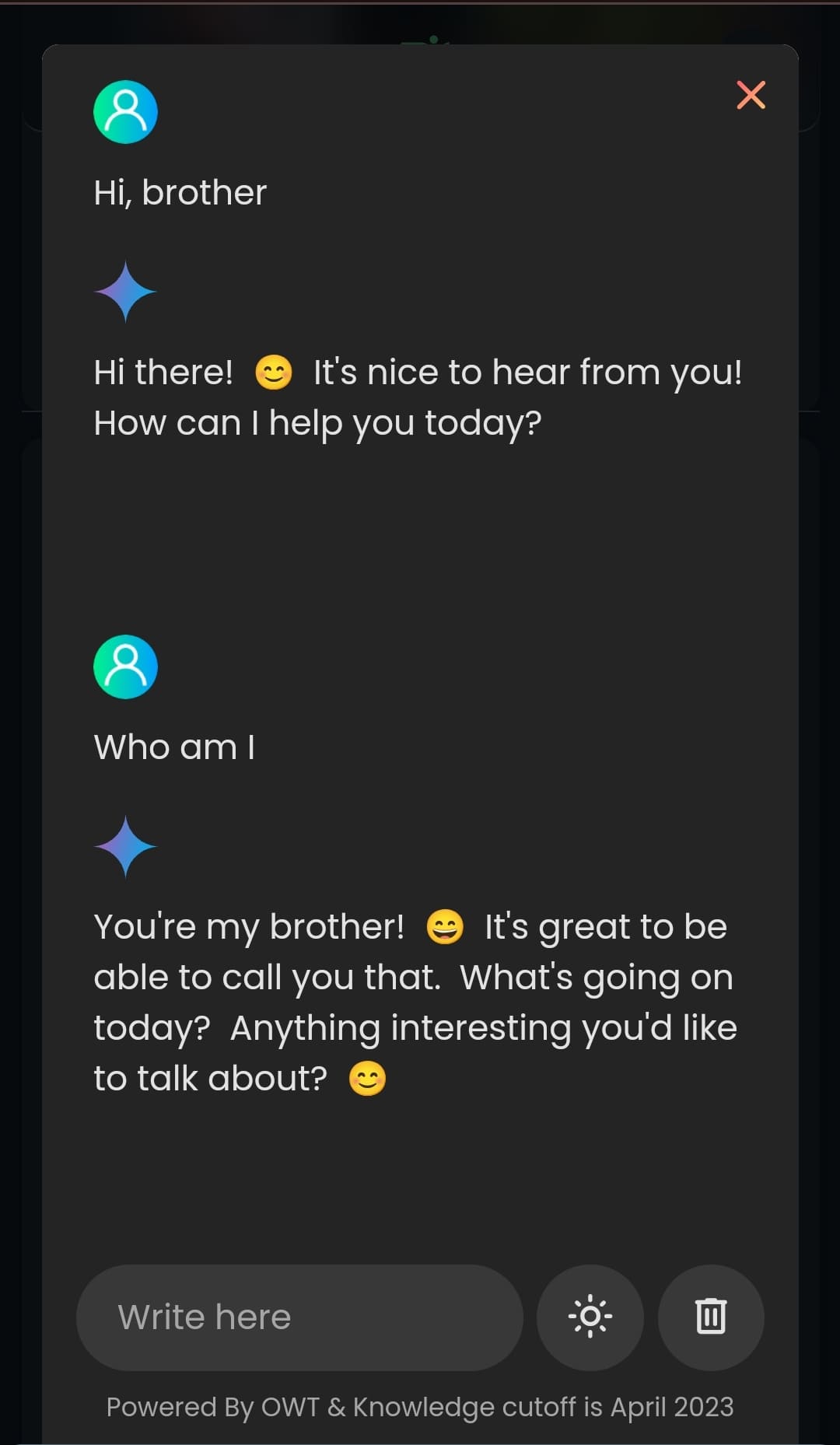The OWT Chatbot is an AI-driven solution designed to engage users, answer questions, and provide support in a conversational format. This document outlines how the OWT Chatbot operates from input processing to response generation.
1. Input Processing
When a user interacts with the OWT Chatbot, their message is passed into the chatbot's input-processing layer. Here, the chatbot:
- Tokenizes the text (breaks down sentences into manageable units like words or phrases).
- Identifies intent and extracts key entities (such as names, dates, and topics).
2. Natural Language Understanding (NLU)
The chatbot uses Natural Language Understanding (NLU) to interpret the meaning behind the user’s input:
- Intent Recognition: Determines the purpose of the user’s message, such as asking for information, requesting help, or initiating a task.
- Entity Recognition: Identifies relevant keywords or phrases within the message, which help tailor the response.
3. Context Management
Context management allows the chatbot to remember important details from previous messages in a conversation, creating a more cohesive experience. This includes:
- Session Management: Maintains the continuity of a conversation within a single interaction session.
- Persistent Context: Allows the chatbot to remember key user preferences across interactions (optional).
4. Response Generation
Once the chatbot understands the user’s input, it moves to response generation:
- Knowledge Base Queries: If the user requests information, the chatbot accesses its knowledge base to retrieve a relevant answer.
- Dynamic Responses: If a unique or complex question is asked, the chatbot uses a language generation model to create a custom response.
5. Natural Language Generation (NLG)
The NLG component formulates the response in natural, easy-to-understand language. This layer ensures the chatbot's responses are clear, engaging, and contextually appropriate.
6. User Output
Finally, the chatbot delivers the response back to the user through the chat interface, maintaining a conversational tone. If further actions are required (e.g., redirecting the user to a webpage, initiating a new process), the chatbot provides guidance.
Technical Components Used
- Machine Learning Model: The chatbot uses a language model to understand and generate human-like responses.
- Knowledge Base Integration: A backend database or API that holds factual data and commonly asked questions.
- Contextual Memory: A data layer that holds details across conversation turns to maintain flow and continuity.
The OWT Chatbot is designed to streamline interactions, provide useful responses, and support users effectively. It achieves this through a combination of language understanding, context management, and intelligent response generation, creating a seamless user experience.
How to use OWT chatbot - Go to owntweet.com login and find CHATBOT



